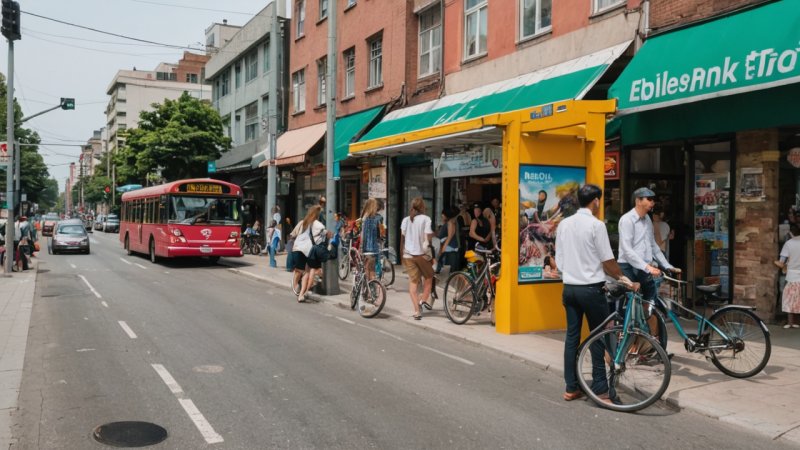When exploring a new destination, the way you choose to get around can greatly influence your experience. Transportation options like public transit and bike rentals offer unique opportunities for cultural immersion. This article will compare these two methods, highlighting their pros and cons, and ultimately helping you choose the best option for your travel needs.
Public Transit
Public transportation systems, such as buses, trams, and subways, are often the lifeblood of urban areas. They provide a cost-effective way to navigate cities while offering insights into daily life.
Pros of Public Transit
- Cost-Effective: Public transit is usually cheaper than renting a vehicle or taking taxis. Most cities offer affordable daily or weekly passes.
- Local Interaction: Using public transport puts you in direct contact with local residents, allowing for spontaneous interactions and conversations.
- Access to Hidden Gems: Public transit often takes you to areas that may not be highlighted in tourist guides, providing access to authentic local experiences.
- Environmental Impact: Utilizing public transport reduces your carbon footprint compared to driving your own car or using rideshares.
Cons of Public Transit
- Limited Schedules: Depending on the city, public transportation may have limited hours, especially in the evenings or on weekends.
- Crowds: Popular routes can be crowded, making the experience less comfortable, especially during peak hours.
- Language Barriers: In non-English speaking countries, navigating public transit can be challenging due to language differences.
Bike Rentals
Biking has become a popular mode of transportation in many cities and is often promoted as a sustainable and healthy way to explore. Bike rentals are readily available in numerous tourist destinations.
Pros of Bike Rentals
- Flexibility: Renting a bike gives you the freedom to explore at your own pace, stopping whenever something catches your eye.
- Health Benefits: Cycling is a great form of exercise, allowing you to stay active while traveling.
- Scenic Routes: Many cities have dedicated bike paths that take you through parks and along waterfronts, offering a scenic view of the area.
- Local Perspective: Riding a bike allows you to cover more ground than walking while still interacting with your surroundings at a closer level.
Cons of Bike Rentals
- Safety Concerns: Not all cities are bike-friendly, and navigating busy streets can be daunting for inexperienced cyclists.
- Weather Dependency: Biking is heavily influenced by weather conditions; rain, snow, or extreme heat can make biking unpleasant or impractical.
- Physical Limitations: Not everyone may be able to bike due to health issues or physical limitations, making this option less accessible.
Comparative Analysis
When deciding between public transit and bike rentals, consider the following factors:
Cost
Public transit tends to be more affordable for longer distances, especially if you plan to use it multiple times a day. However, if you are renting a bike for a full day, the cost may balance out.
Cultural Engagement
Public transit offers intimate glimpses into daily life and local culture, while biking allows for a more active exploration where you can stop and engage with your surroundings on a personal level.
Convenience
Public transit is often more convenient for reaching distant attractions, but biking can be quicker for navigating smaller areas or neighborhoods.
Environmental Considerations
Both options are eco-friendly compared to driving. However, biking reduces your carbon footprint even further and promotes a healthier lifestyle.
Conclusion
Ultimately, the choice between public transit and bike rentals depends on your personal preferences, the destination, and your travel goals. If your aim is to immerse yourself in local culture while enjoying the convenience of reaching various attractions, public transportation is a great option. On the other hand, if you seek an active way to explore and appreciate the scenery, bike rentals could be the ideal choice. For a truly enriching experience, consider incorporating both methods into your travel plans to take advantage of the unique benefits each offers.






